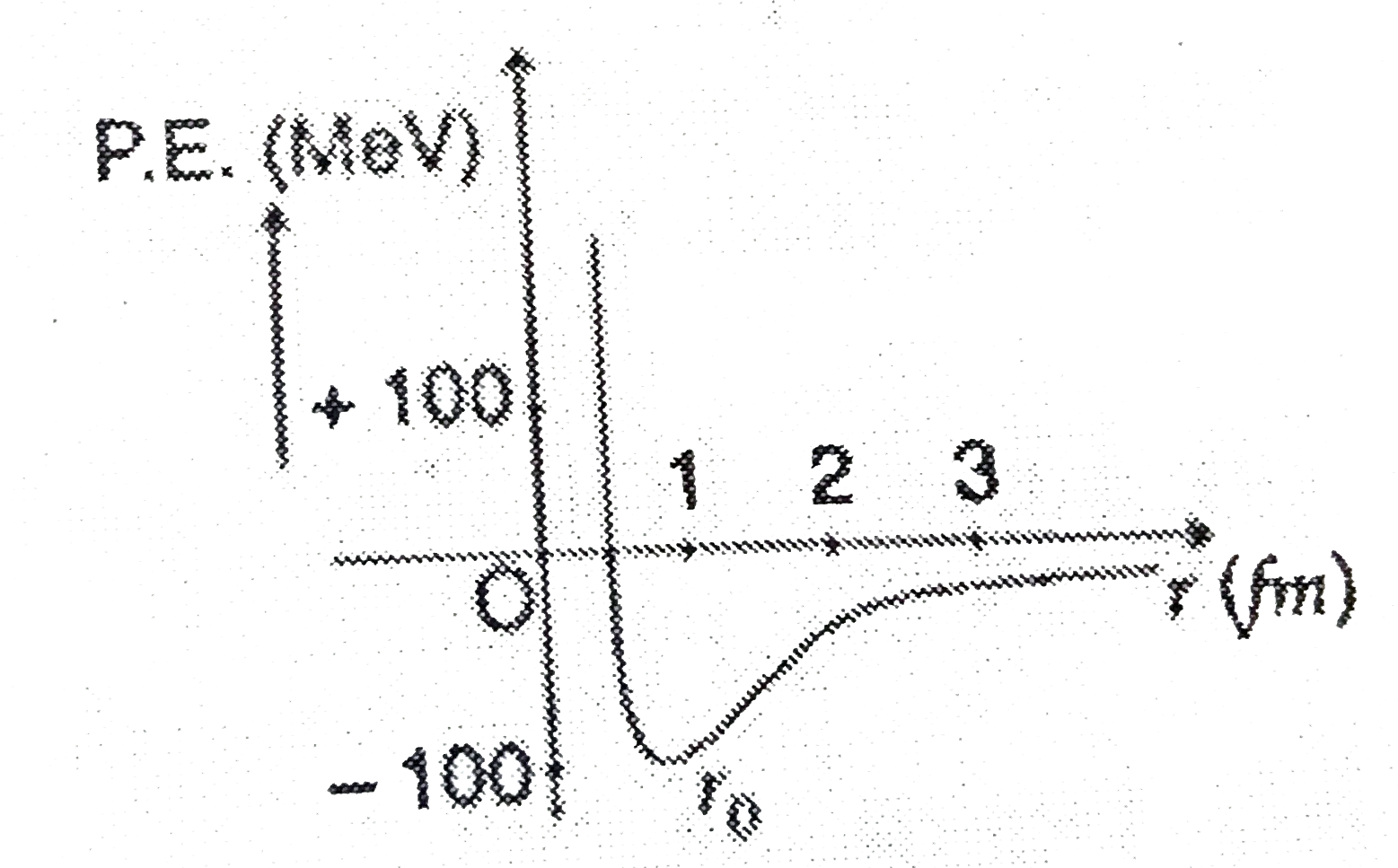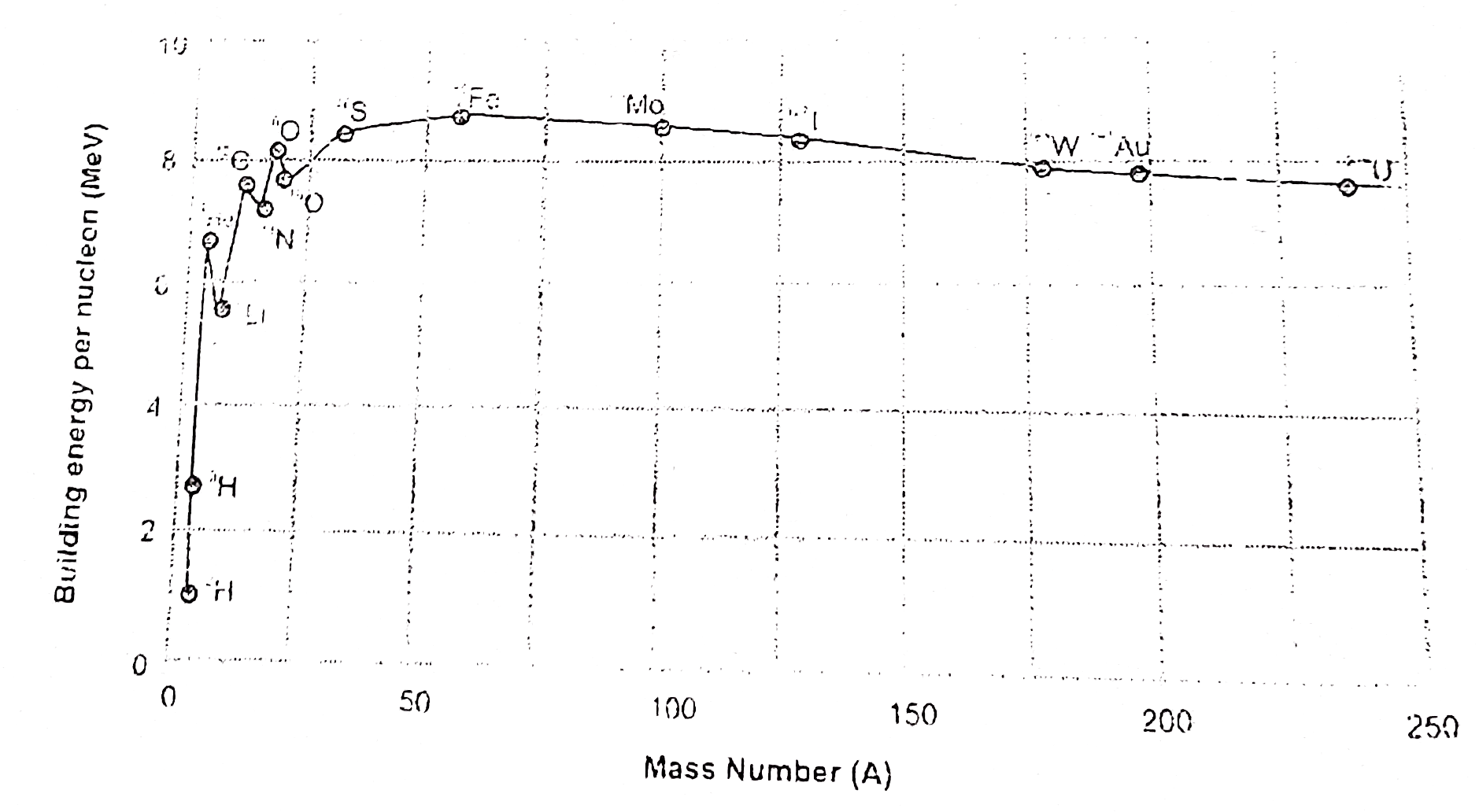(a) The mass of a nucleus in its ground state is always less than total mass of its constituents - neutrons and protons. Explain.
(b) Plot a graph showing the variation of potential energy of a pair of nucleons as a function of their separation.
(a) Protons and neutrons have to come together within a very small space of the order of 10−14 to make a nucleus. The energy required to do so is provided by the nucleons at the expenses of their masses. Due to this, the mass of the nucleus formed is always less than the sum of the masses of the constituent nucleons.
(b) Graph : The graph showing potential energy of a pair of nucleons as a function of their separation is shown in given figure.

Topper's Solved these Questions
- XII BOARDSBOOK - XII BOARD PREVIOUS YEAR PAPER ENGLISHCHAPTER - XII BOARDSEXERCISE - [Set- II]
4 Videos
- XII BOARDSBOOK - XII BOARD PREVIOUS YEAR PAPER ENGLISHCHAPTER - XII BOARDSEXERCISE - [Set-III]
3 Videos
- XII BOARDSBOOK - XII BOARD PREVIOUS YEAR PAPER ENGLISHCHAPTER - XII BOARDSEXERCISE - SET-III, DELHI BOARD
4 Videos
- SAMPLE PAPER 2019BOOK - XII BOARD PREVIOUS YEAR PAPER ENGLISHCHAPTER - SAMPLE PAPER 2019EXERCISE - SECTION D
6 Videos
Similar Questions
Draw the graph showing thervariation of binding energy per nucleon with mass number. Give therason for the decrease of binding energy per nucleon for nuclei with high mass numbers.

The binding energy per nucleon for nuclei with high mass number is low due to the large coulomb repulsion between the protons inside these nuclei.
View Solution(a) In a nuclear reaction 32He+32He→42He+11H+11H+12.86 MeV, though the number of nucleons is conserved on both sides of the reaction, yet the energy is released. How? Explain.
(b) Draw a plot of potential energy between a pair of nucleons as a function of their separation. Mark the regions where potential energy is (i) positive and (ii) negative.
View Solution
Knowledge Check
The mass of .73Li is 0.042 amu less than the sum of masses of its constituents. The binding energy per nucleon is
A5.586 MeVB10.522 MeVC2.433 MeVD3.739 MeVThe total energy of a hydrogen atom in its ground state is −13.6eV. If the potential energy in the first excited state is taken as zero then the total energy in the ground state will be
A−3.4eVB3.4eVC−6.8eVD6.8eV
A rod of length L and mass m is kept vertically on the ground. Its potential energy is :
View SolutionHelium atom has an atomic mass of 4 u and two protons in its nucleus. How many neutrons does it have?
View SolutionUsing the conservation laws, demonstrate that the total mechanical energy of a planet of mass m moving around the Sun along an ellipse depends only on its semi-major axis a. Find this energy as a function of a.
View SolutionThe experimentally determined molar mass for what type ofsubstances is always lower than the true value when water is used as solvent. Explain. Give one example of such a substance and one example of a substance which does not show a large variation from the true value.
View SolutionM,Mn&Mp denotes the masses of a nucleous of .ZXA a neutron, and a proton respectively. If the nucleus is separated in to its individual protons and neutrons then
View SolutionSulphur has an atomic number 16 and a mass number of 32. State the number of protons and neutrons in the nucleus of sulphur. Give a simple diagram to show the arrangement of electrons in an atom of sulphur.
View Solution
